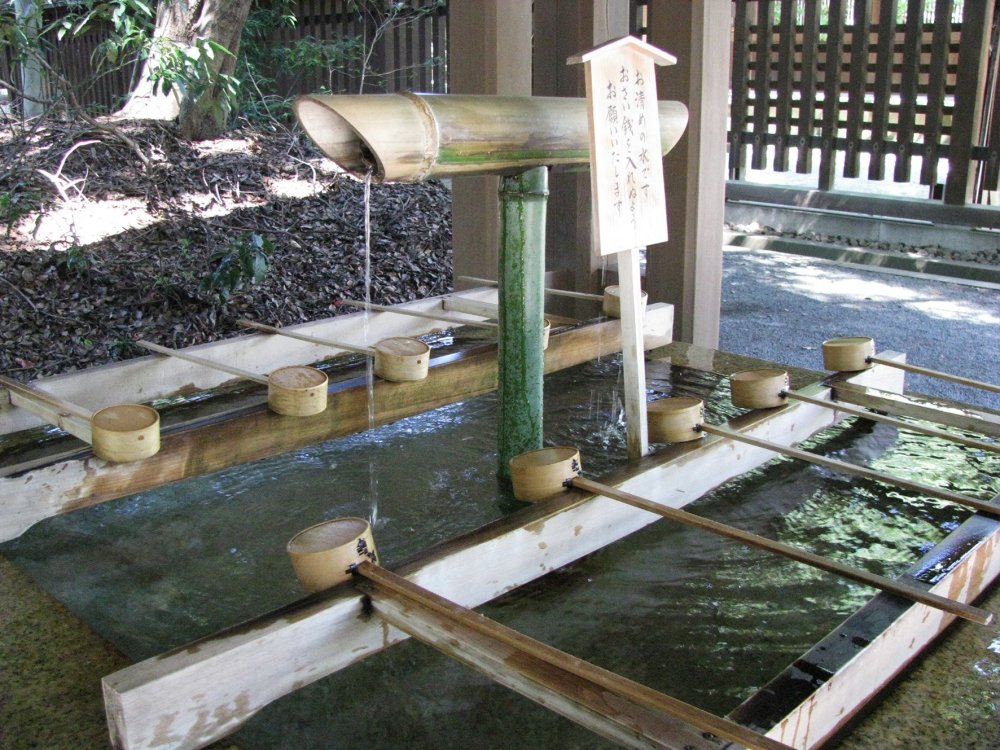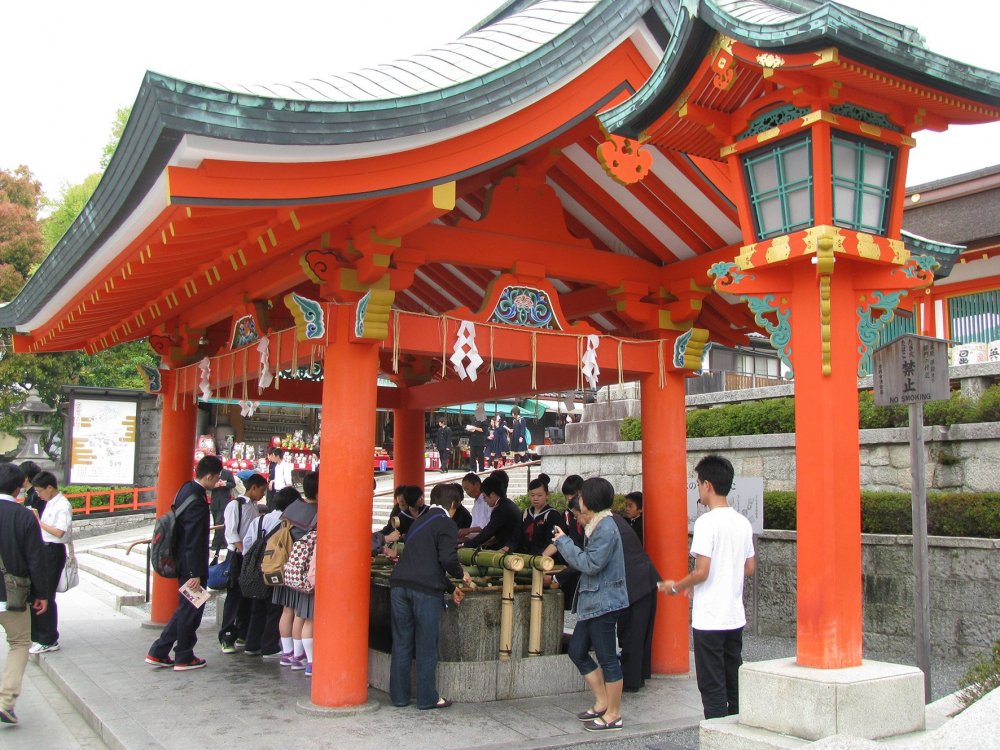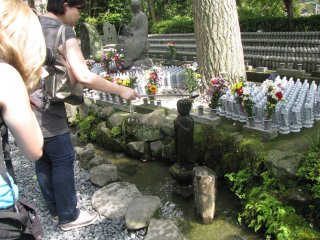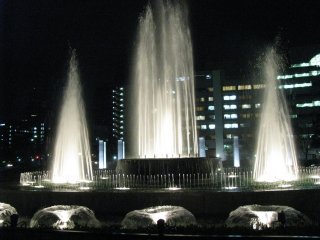According to the ancient myths, the Japanese islands appeared from water droplets that fell from the Sacred Spear of the deities Izanami and Izanagi.
Water in Religions
Japans ancient religion is Shinto, the worship of Kami deities. The entrance to a Shinto shrine is marked by torii (gates), and right by it is a temizu or chozu-ya – a water ablution pavilion. In the past, purification was carried out in a clean stream or river- in the main shrine of Ise Jingu this continues but this became impossible in cities, so temizu appeared. The meaning of the ritual is clear – to apply to Kami, one must be pure in body and soul. According to Shinto, running water and waterfalls are sacred objects. A person standing under a waterfall is cleansed of spiritual impurity. At some shrines like Fujisan Hongu Sengen Taisha, there are sacred springs where water is available to drink for physical and spiritual health.
Japan is characterized by the coexistence of two religions, Shinto and Buddhism. In Buddhism, water symbolizes the inextinguishable flow of being. In Buddhist temples there is no water purification ceremony, but there is a tradition to pour water from a spring on the head of a statue of a saint, for example, Jizo. One of the most famous in Japan is Kyoto's Kiyomizu-dera Temple, or the Temple of Pure Water. There is a waterfall here called Otowa whose waters are divided into three streams. Each has its own meaning; one brings success, the second, love and the third, longevity. A person must choose just one of the three, since drinking from all is considered impermissible greed. According to Buddhist traditions, an eternal fountain is built in honor of those who have passed away from this life (like the one in Hiroshima), symbolizing the endless cycle of death and rebirth.
Hot springs
Due to Japan's high volcanic activity, there are some 3,000 onsen hot springs that have been used since ancient times for recreation and wellness. You can even cook in a hot spring. Of course, now rarely anyone will cook in this way, but for tourists in Owakudani - a station near Fuji-san - kuro-tomago eggs are boiled in a hot spring, the shell of which turns black from the high content of sulfur and iron in the water. The oldest is considered to be Dogo onsen, located in Ehime Prefecture on the island of Shikoku - it is already more than 3000 years old! Visiting onsen is a special aspect of culture in Japan.
Water in castles & gardens
Castles in Japan were primarily used as fortresses, so they were built to be impregnable. Many of them, such as Karasu-jo in Matsumoto, Osaka Castle, Himeji, Hiroshima and others, were surrounded by a "mizubori" - a moat with water. In a traditional Japanese garden, there is always water in the form of a pond or a small waterfall. Most gardens recreate natural landscapes in miniature, and water symbolizes calm contemplation.
Water for cultivation
Rice as a national treasure has a special place in Japan. It has been grown since ancient times in the traditional way - filling fields with water and sowing rice grains. Of course, drought or excessive precipitation harm the crop. Particularly good rice grows in mountainous areas such as Niigata. Growing wasabi requires a lot of water as do vegetables like lettuce, daikon, cabbage, and cucumbers.































































Tokyo's origin depended a lot on water sources. The Tokyo Waterworks Historical Museum is a great place to see how the city developed its water system.
https://en.japantravel.com/tokyo/tokyo-waterworks-historical-museum/58842